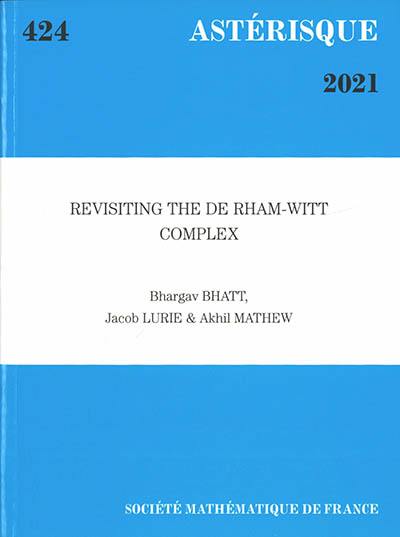
Serie : Astérisque. Vol 424
Paru le 22/06/2021 | Broché 165 pages
Professionnels
Le but cet article est de présenter une nouvelle construction du complexe de Rham-Witt d'une variété lisse sur un corps parfait de caractéristique p> 0.
Nous introduisons une catégorie de complexes de cochaînes munis d'un endomorphisme F des groupes abéliens gradués sous- jacents satisfaisant dF = pFd, catégorie dont nous étudions en détail l'algèbre homologique. À partir d'un objet de cette catégorie satisfaisant un analogue abstrait de l'isomorphisme de Cartier, un procédé homologique élémentaire associe une généralisation de la construction de de Rham-Witt. On peut interpréter abstraitement cette algèbre homologique comme un calcul des points fixes de l'opérateur de Berthelot-Ogus Lηp sur la catégorie dérivée p-complète. Nous donnons diverses applications de cette approche, notamment une simplification du théorème de comparaison cristallin de la théorie de cohomologie AΩ introduite dans [12].
The goal of this book is to offer a new construction of the de Rham-Witt complex of a smooth variety over a perfect field of characteristic p> 0
We introduce a category of cochain complexes which are equipped with an endomorphism F of underlying graded abelian groups satisfying dF = pFd, whose homological algebra we study in detail. To any such object satisfying an abstract analog of the Cartier isomorphism, an elementary homological process associates a generalization of the de Rham-Witt construction. Abstractly, the homological algebra can be viewed as a calculation of the fixed points of the Berthelot-Ogus operator Lηp on the p-complete derived category. We give various applications of this approach, including a simplification of the crystalline comparison for the AΩ-cohomology theory introduced in [12].